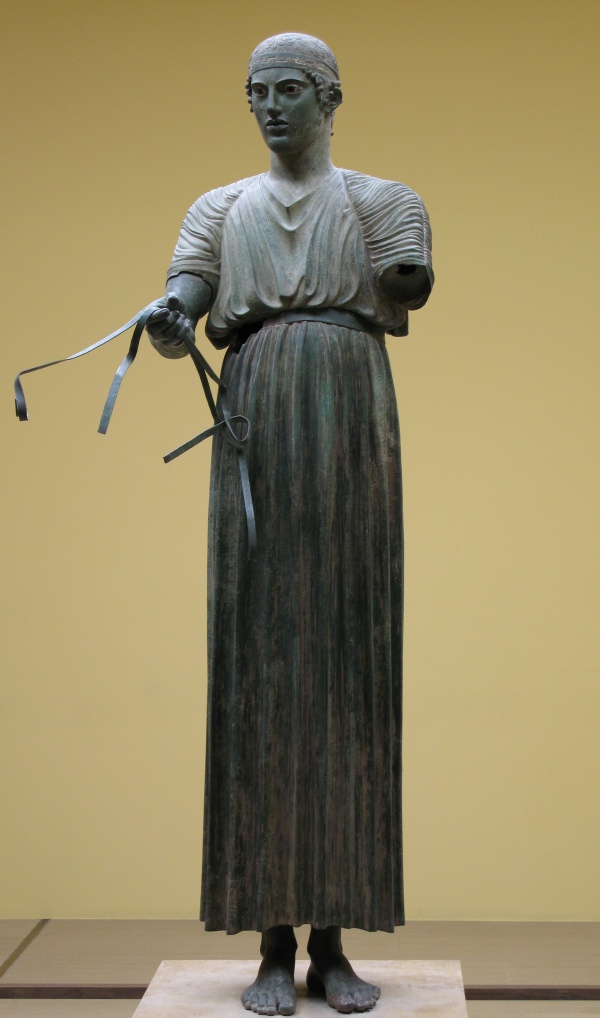Facts About Charioteer of Delphi
The Charioteer of Delphi, also known as Heniokhos, stands as one of the most celebrated ancient Greek statues, renowned for its exquisite craftsmanship in bronze. This life-size statue of a charioteer was unearthed in 1896 at the Sanctuary of Apollo in Delphi and now resides in the Delphi Archaeological Museum. It was erected to commemorate the victory of Polyzalus, the tyrant of Gela in Sicily, and his chariot in the Pythian Games of 470 BC. Scholars believe the statue was cast in Athens and attribute it to the renowned sculptors Pythagoras of Samos and Calamis.
What makes the Charioteer particularly remarkable is its survival through the ages. Unlike many ancient bronze statues that were melted down or corroded over time, this masterpiece was preserved because it was buried under a rockslide at Delphi. The statue remains almost entirely intact, missing only a few parts such as the left forearm and some details on the head. It depicts a young man dressed in a long tunic and belt, standing in a poised and dignified manner. His attire and posture suggest he was from a noble background, likely a teenager chosen for his lightness and height to race chariots in the Panhellenic Games.
Art historians classify the Charioteer as an example of the "Early Classical" or "Severe" style, marking a shift towards a more naturalistic representation compared to the earlier Archaic sculptures. The statue's serene expression and slightly tilted head signify a departure from the rigid and formal poses of the Archaic era. Unlike most athletes of the time who were depicted nude, the Charioteer's clothing suggests he may have been of higher status, possibly even a noble youth, which aligns more consistently with his dignified attire and poised demeanor.
The discovery of the Charioteer had a significant cultural impact, even influencing fashion. In the early 20th century, Spanish artist-designer Mariano Fortuny y Madrazo created the Delphos gown, a series of finely pleated silk dresses inspired by the statue’s robes. These gowns are considered iconic pieces of fashion and art, with one even featured in the Museum of Modern Art's collection in 2003.

 Albania
Albania